The 18th International Landscape Architectural Symposium of Japan, China, and Korea visited Murin-an for an observational tour.
On the afternoon of November 10, 2023, the 18th International Landscape Architectural Symposium of Japan, China, and Korea visited Murin-an for an observational tour.
The International Landscape Architectural Symposium of Japan, China and Korea is a biannually held conference of the Japanese Institute of Landscape Architecture, Chinese Society of Landscape Architecture, Korean Institute of Landscape Architecture. This year’s conference was held in Kyoto from November 11-12. The conference’s theme was “The Next Generation of Landscape from Asia: Traditions and Innovations.”
For the observational tour at Murin-an, we aimed to convey to Chinese and Korean participants not just the garden’s historical background and highlights, but also Japanese garden management methods by featuring a demonstration given by Murin-an’s head gardener. After hearing a ten-minute explanation of the garden, participants broke into three groups to enjoy our gardener’s demonstration, free time strolling in the garden, and a serving of Japanese tea.
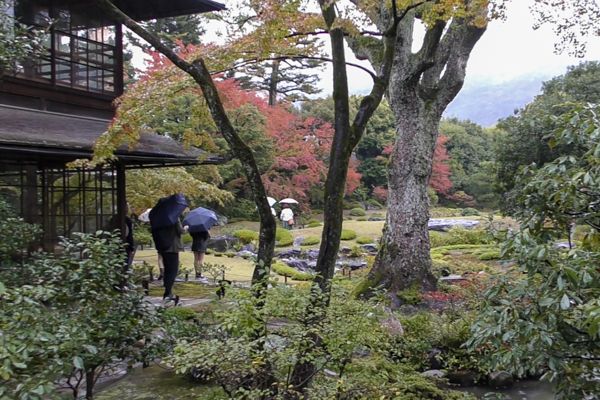
Unfortunately, it was a rainy day. The outdoor demonstration of the Japanese gardening technique of pine needling (hamushiri) we had planned was therefore held in Murin-an’s Western-style building using branches cut from a Japanese red pine.
Pine needling is the work of refreshing a pine tree’s look by plucking away old needles by hand between autumn and winter (particularly before the end of the year). By this day, all work on Murin-an’s black pines had been finished, but no work had yet been done for the garden’s red pines.
Interpreter Michael Shapiro gave a simple explanation of hamushiri, after which Murin-an’s head gardener Kenta Deguchi gave a demonstration using cut branches about 50-60cm wide.
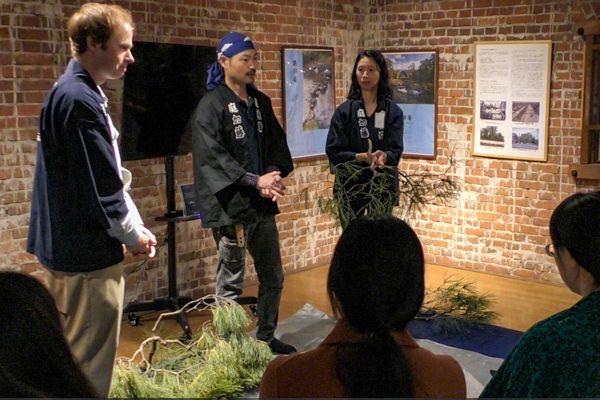
In pine needling, before plucking needles by hand, first shears are used to cut away unnecessary branches while keeping in mind the transparent feeling of the pine’s finished look. Just pruning with shears alone refreshed the heavy look of the small overlapping branches almost instantly. From there, pine needles were plucked by hand, but the work ended within a matter of minutes. Heavy branches changed to light and airy in an instant, which seemed to leave participants wanting to experience a little bit more.
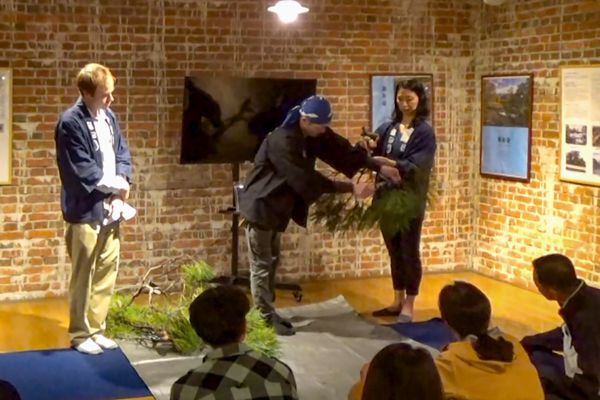
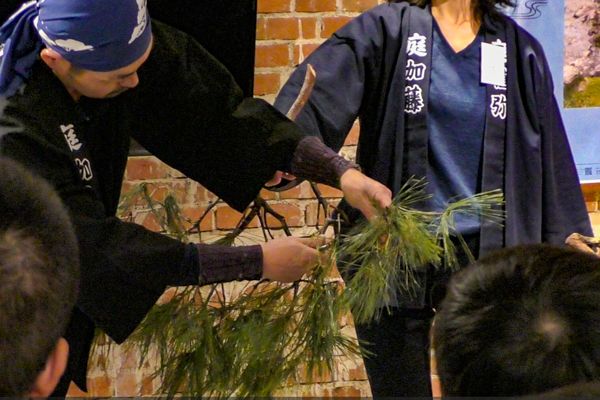
We therefore had one Chinese participant and one Korean participant experience hand-plucking pine branches for themselves.
Participants asked many questions about how long the work takes, whether the work is performed for other similar tree varieties, and whether it changes with the trends of the time. Some Korean participants told us that, although tree branches are sometimes removed to facilitate the flow of air for trees in Korea, they were surprised at the detailed level of work used for hamushiri.
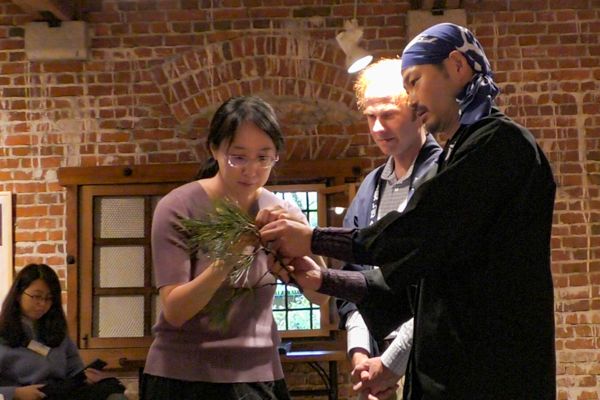
Observations and questions from experts from different countries were stimulating for us too, allowing us to renew our awareness of the uniqueness of Japanese gardens in the East Asian cultural sphere.